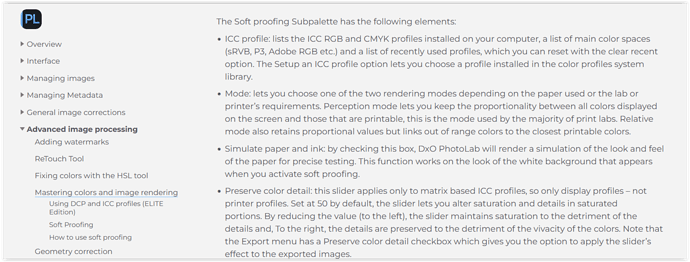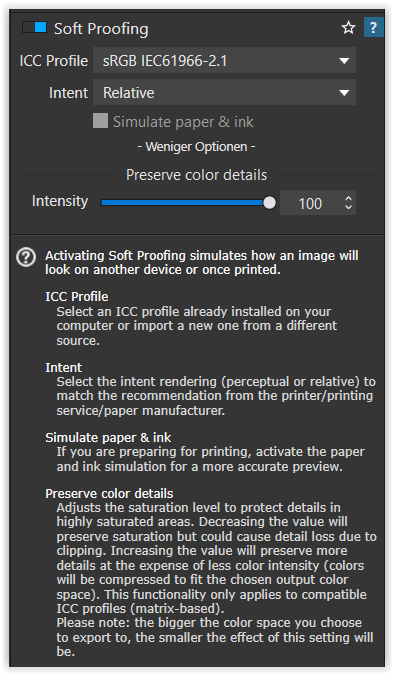The description about Softproof / Preserve color detail seems to be correct
(typo → sRVB).
The description in 11. about Export / Preserve color detail is partly correct
(Typo → sRVB, AdobeRVB).
-
Unchecked (default): no preservation of color detail.
→ is correct -
Checked box and softproofing profile: saturated color protection is applied, with the default value (50) applied to the color protection slider in the softproofing subpalette.
→ would be correct *) -
Checked box and softproofing profile: Checked box and ICC profile: Same as Soft Proofing: the ICC export profile is the same as the ICC profile selected in the Soft Proofing subpalette and color detail is preserved according to the intensity slider setting.
→ is correct
I have checked this intensively.*) Regardless of
- Rendering intent set to perceptual / relative colorimetric
and / or - Preserve color detail set to 0, 50 or 100 …
with the Export / checked box

always a default value of 50 is applied,
which – if intended to simplify matters – I think is fine,
as otherwise one can use Export with Same as Soft proofing
and then apply whatever looks appropriate for the pic in question.
The user interface is improved, but still confusing.
As it already has been said, the choice of Rendering Intent is only applicable for printer profiles
(see also the ?-help)
but still visible / not greyed out / hidden,
while the Preserve color details slider is concealed ( + more options / Weitere Optionen + )
inspite of being active with matrix profiles.
*)
To find out how the Export works, I did tests with
.
#1

0, 50 and 100 / SP deactivated ( = no change )
→ all exports look the same
.
#2

0, 50 and 100 / with SP deactivated and activated
→ all exports had been changed by the same amount / look the same
( = Same as Soft Proofing / SP set to 50 )
.
#3

0, 50 and 100 / Same as Soft Proofing
→ the exports were rendered accordingly to the setting


